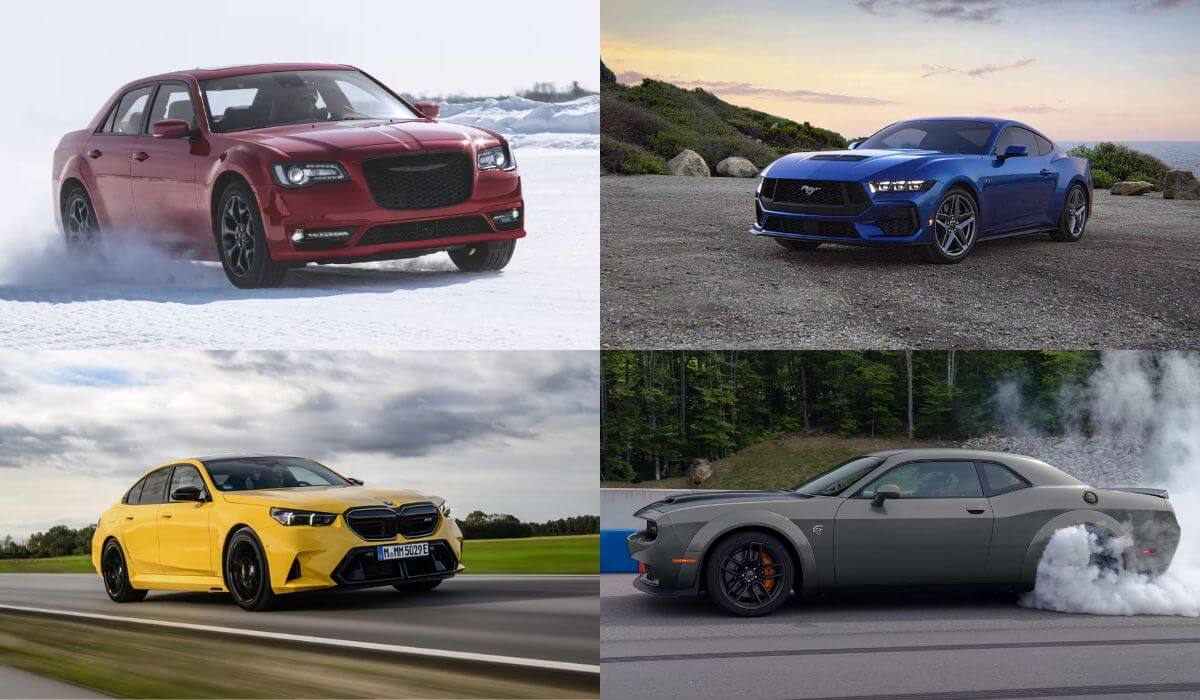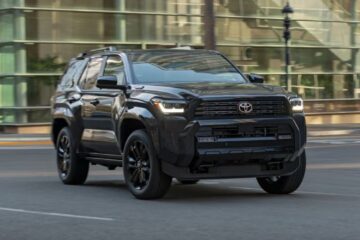The Dodge Charger has been a staple in the muscle car world, pairing ample horsepower with everyday drivability like few options on the market. Unlike most muscle cars, typically only offered in coupe form, the Charger offers drivers four doors, making it an ideal mix of sporty and comfortable if you like to be driven hard but still need space. From the growling HEMI V8 and head-turning looks to rear-wheel-drive performance, the Charger delivers everything American muscle is all about.
However, with Dodge pulling the plug on the gas-power models of the Charger, many enthusiasts are looking for muscle car alternatives that can still increase heart rate. While some may stick with traditional V8 muscle, others might venture to modern performance sedans or make the EV leap for high-powered electric segments. The good news? Its horsepower, torque, and muscle-car exterior may impress, but plenty of alternatives can compete with, if not outmatch the Charger.
This article covers the finest Dodge Charger alternatives, from the Ford Mustang to the Cadillac CT5-V Blackwing, from muscle to sports sedans. Finally, we will discuss the electric car titans, including the Tesla Model S Plaid, which brings speed to a whole new level.
Be it a track-focused coupe, luxury muscle sedan, or all-electric performance machine, there’s a Charger alternative for every taste. Now, in no particular order, let’s get the best examples for those looking for muscle car power, styling, and driving enjoyment!
Must Check: 10 Cars Similar to the RAV4: Top Toyota RAV4 Competitors
#1. Ford Mustang
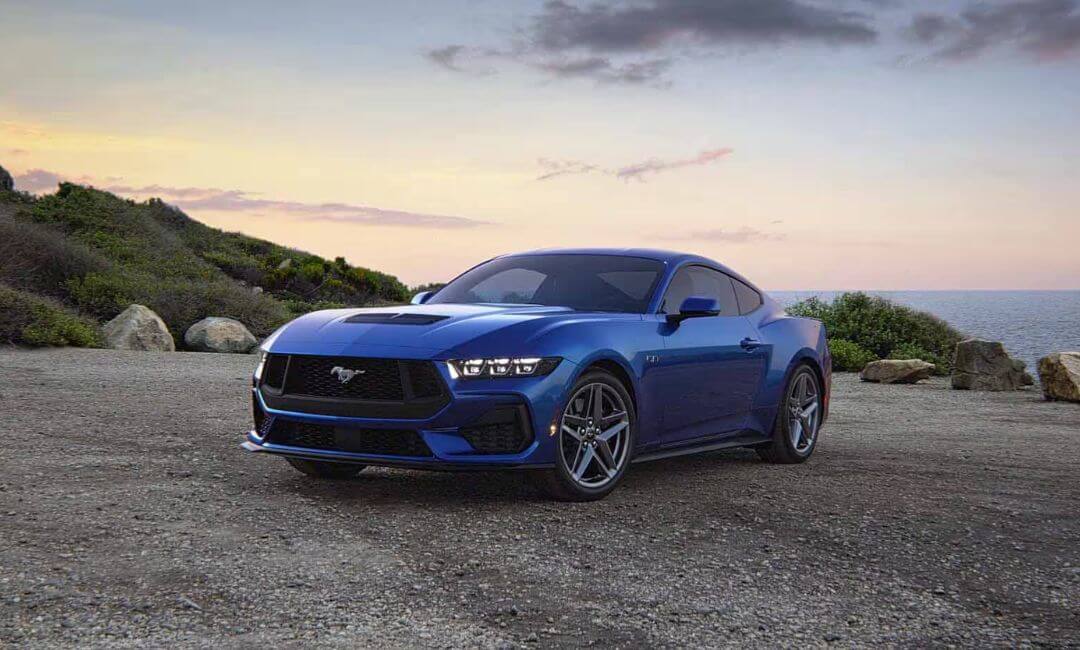
- Engine options: 2.0L Turbo I4, 3.6L V6, 6.2L V8, 6.2L Supercharged V8 (ZL1)
- Horsepower & Torque: Up to 650 hp(ZL1)
- Transmission: 6-speed manual, 10-speed automatic
- Drivetrain: RWD
You can still find the Ford Mustang with all the benefits of a classic American muscle car, such as a powerful engine, an athletic body, and the technology of modern vehicles. From the frugal 2.3L EcoBoost I4 through the savage 5.2L V8 in the Dark Horse, the Mustang has something for every kind of enthusiast. With 500 horsepower in Dark Horse trim, it has what it takes to challenge any performance car. A 6-speed manual for enthusiastic driving and a 10-speed automatic for smoother shifts are options for drivers. Unlike some competitors, The Mustang is RWD-only, preserving the feel of an actual American muscle car.
Why it’s similar to the Dodge Charger:
Not surprisingly, the Mustang and Dodge Charger both have a love for brute force and bold looks. Both offer muscular designs, big-bore V8 engines, and various trims for performance requirements. Like the Charger, Mustang fans can spice up their ride with performance upgrades, which come in different handling and power packages. Thanks to its weight, the Charger doesn’t carry over a manual transmission, which makes the Mustang keep a leg up on purists seeking an old-school driving experience.
Where It Differs
The most significant difference between the Mustang and Charger comes from their body style–the Mustang is a two-door coupe while the Charger is a four-door sedan, making it naturally more practical. That makes the Charger a better choice for those needing extra passenger room. The Mustang also enjoys a lighter chassis and more refined handling, enabling it to be more sprightly than the Charger, aimed at a more sporty, big-power driving experience. But they are ultimately different beasts: the Mustang is the more driver-oriented, while the Charger is all about muscle car straight-line speed and willingness.
#2. Chevrolet Camaro
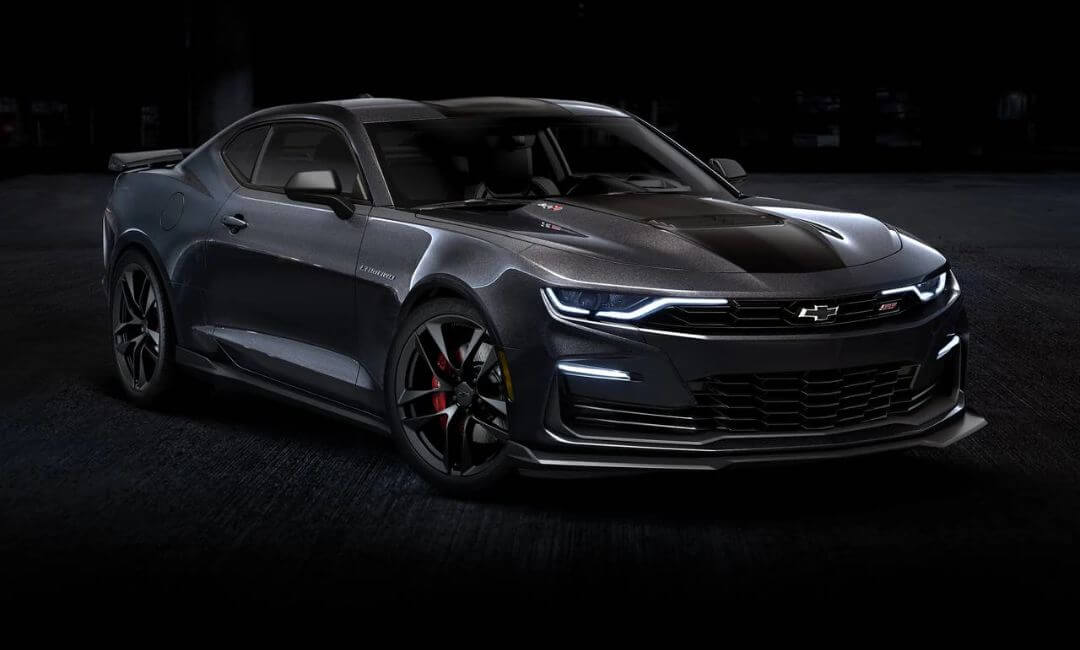
- Engine options: 2.0L turbo I4, 3.6L V6, 6.2L V8, Supercharged 6.2L V8 (ZL1)
- Horsepower & Torque: Up to 650 hp (ZL1)
- Transmission: 6-speed manual, 10-speed automatic
- Drivetrain: RWD
The third-generation Chevrolet Camaro is an American muscle car classic, an uncompromising blend of raw power, aggressive styling, and a driver-centric experience. With choices ranging from a 2.0L turbocharged inline-4 through a 3.6L V6, a 6.2L V8, and even a supercharged 6.2L V8 (ZL1) that no man’s heart will soon forget, nobody does option laziness like the Camaro. The ZL1 is pumped up to a mind-bending 650 horsepower, thus putting the car at home on the race track. A 6-speed manual will be available for purists, and a 10-speed automatic will offer a smoother-ride transmission option. The Camaro is RWD only, which firmly reinforces its muscle car heritage over some competitors.
Why it’s similar to the Charger
The Camaro has one big thing in common with the Charger. Outside of its bold muscle car styling and powerful V8 options, despite being in that 90-grand ballpark, it has a relatively low price compared to ultra-high-performance European sports cars. It’s intended for speed, straight-line performance, and all of that fun you can with the Charger;
Where It Differs
The new one is so powerful that arguing against either car is hard. However, as you all know, the Camaro is a two-door coupe, so it’s getting dinged for being smaller and less practical than the four-door Charger. A lower ride height and lighter weight also make for better cornering hardware and increased confidence in the twisties. Of course, that also sacrifices some passenger room in the back and some cargo space.The Chevrolet Camaro is the right muscle for a track-ready beast with tight controls and power.
#3. Chrysler 300 SR
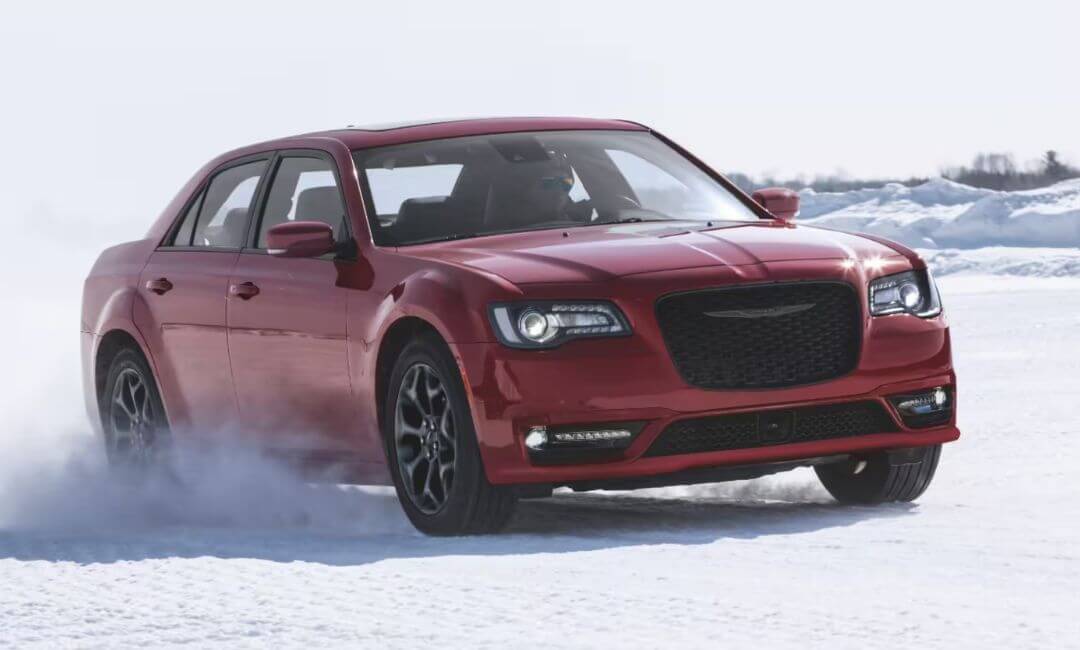
- Engine Options: 6.4L HEMI V8
- Horsepower: 485 hp
- Torque: 475 lb-ft
- Transmission: 8-speed automatic
The Chrysler 300 SRT also combines muscle car performance with full-size luxury to create a big, mean sedan. Under the hood, it sports a 6.4L HEMI V8 that produces a whopping 485 horsepower and 475 lb-ft of torque. This burly matches an 8-speed automatic transmission, providing smooth yet relentless power. Standard equipment includes rear-wheel drive (RWD), with an optional all-wheel-drive (AWD) to improve traction in different driving conditions.
Why it’s similar to the Charger
Because the Chrysler 300 SRT is built on the same platform as the Dodge Charger, both cars share nearly identical dimensions and behavior. Like the high-performance versions of the Charger, its 6.4L HEMI V8 delivers exhilarating power. But while the Charger is pure aggression, the 300 SRT channels that aggression into a more spirited and champagne-like package, delivering a luxury muscle-car experience.
Where It Differs
The Chrysler 300 SRT, in contrast to the Charger, is mostly luxury rather than brutal sportiness. It treats you better thanks to its heavier makeup and softer dynamic, smoothing over the road quite well. The Charger doesn’t want track-ready performance, but the 300 SRT offers a more sedate, more luxurious cabin than its mate–and maybe more fine-tuned power delivery with it.
Read More:
- 10 Cars That Look Like Jeeps but Aren’t
- Top 10 Most Powerful V6 Engines on the Market Today!
- Top 10 Best SUV’s From the Decade 2010 to 2020 With Great Fuel Efficiency
#4. Tesla Model S Plaid

- Engine Options: Electric – Three-motor setup
- Horsepower: 1,020 hp
- Torque: instant torque
- Transmission: Single-speed automatic
- Drivetrain: AWD standard
Tesla Model S Plaid Although it’s an all-electric sedan, the Tesla Model S Plaid packs a high-performance punch. With a three-motor design and standard AWD, this EV sprints with incredible speed and advanced technology. Unlike typical muscle cars that use the slow ramp-up of combustion power to create 1,020 horsepower of quickness, the Model S Plaid channels instant torque to transform the sedan into one of the quickest vehicles ever built. The one-speed auto delivers power so efficiently that the action is thrilling without being tried.
Why it’s similar to the Charger
The Tesla Model S Plaid is a lot of things, but a muscle car is not one of them. However, the Model S Plaid has a few key characteristics in common with the Dodge Charger, which would make it a fitting replacement for enthusiasts. Its near-instantaneous thrust differentiates itself from most sedans, with 0-60 mph taking just 1.99 seconds—a time even supercars find challenging to achieve. Again, like the Charger, the Model S Plaid is a big four-door sedan with an in-your-face, brash exterior that makes its presence known. It also has exotic styling and like Dodge design does – sports lots of advanced technology and a futuristic take on performance.
Where It Differs
But the Model S Plaid is a far different beast than the muscle-car quick Dodge Charger. Instead, it is missing the thunderous V8 roar, and in its place, we have silent but violent acceleration. Also, as an electric vehicle (EV), it avoids the feel of the gas-powered muscle car experience for one that is emission-free and loaded, with a high-tech driving experience. The Model S Plaid, on the other hand, has insane power and technology way ahead of a traditional muscle car, so while it doesn’t feel analog and mechanical like one, it still makes for a thrilling alternative.
#5 Dodge Challenger
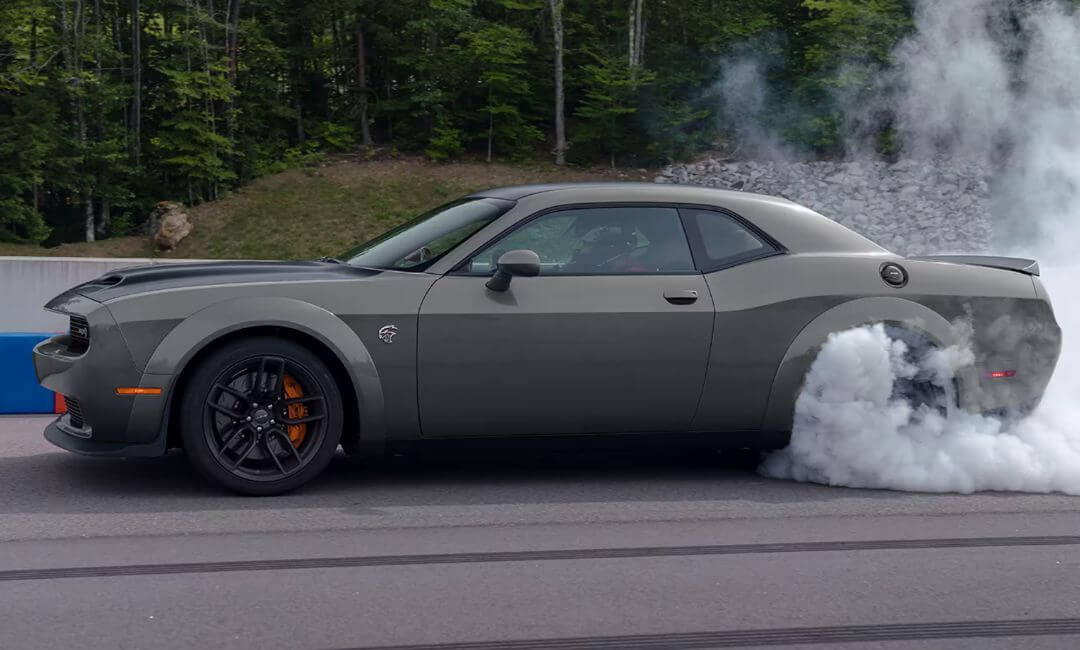
- Engine options: 3.6L V6, 5.7L V8, 6.4L V8, Supercharged 6.2L V8 (Hellcat & Demon)
- Horsepower & Torque: Up to 1,025 hp (Demon 170)
- Transmission: 6-speed manual, 8-speed automatic
- Drivetrain: RWD standard, AWD available on V6 models
Though the Dodge Challenger’s classic muscle car vibe helps it relish rear-wheel-drive (RWD) launches and power-directed antics, Dodge also coaxes—trade it in a V6, and you’ll pay for all-wheel drive (AWD). That makes the Challenger different from muscle car competitors, as the AWD system does provide some degree of traction on slippery roads to make it a year-round proposition, even in harsher winter regions.
Why it’s similar to the Charger
The same goes for the Dodge Challenger and Charger, whose efficient 3.6L V6 leads to the monstrous Supercharged 6.2L V8 that powers the Hellcat and Demon models. Each respective vehicle features vigorous power and an inherent muscle car character. It boasts modern amenities such as a large infotainment display, seating for five, and safe tech. On top of that, its massive dimensions make it roomier than rivals such as the Ford Mustang and Chevy Camaro.
Where It Differs
Of course, the most notable difference between the Challenger and the Charger is the body style. The Charger is a four-door sedan, while the Challenger maintains the traditional two-door coupe. This gives the Challenger a very classic muscle car appearance but makes it a poor family car. The Challenger is significantly heavier than the Mustang and Camaro, and it does not handle as well as them, but it is much more stable and comfortable at speed.
#6. BMW M5
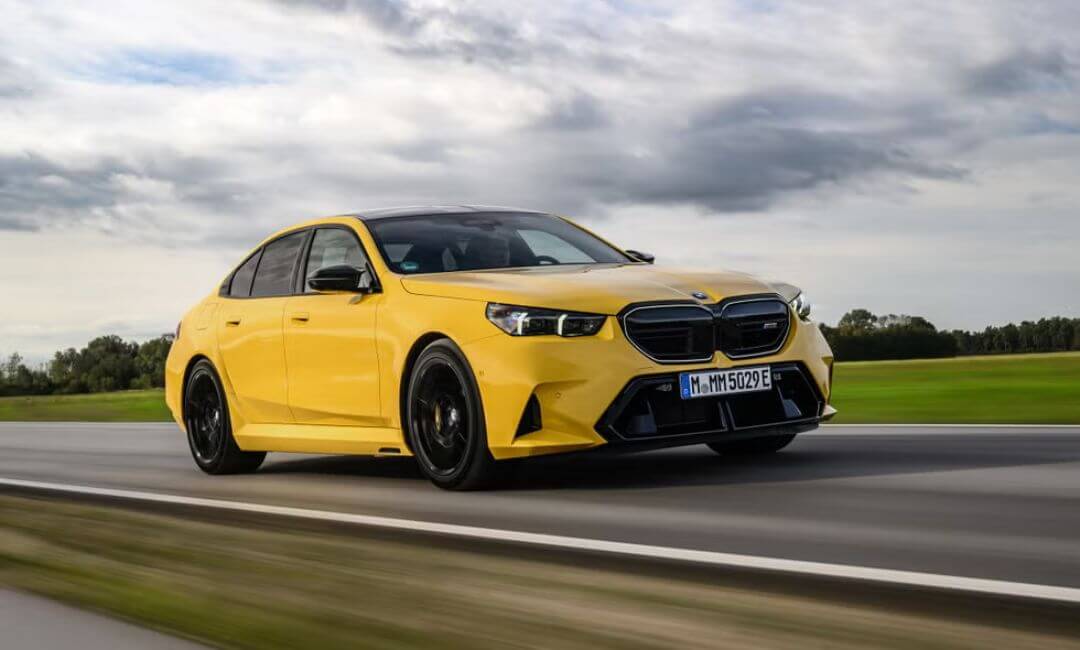
- Engine: 4.4L twin-turbo V8
- Horsepower & Torque: 617 hp, 553 lb-ft
- Transmission: 8-speed automatic
- Drivetrain: AWD with selectable RWD mode
The BMW M5 is a powerful luxury sedan that perfectly combines raw power and precision. It has a 4.4L twin-turbo V8 underneath its hood, delivering 617 horsepower and 553 lb-ft of torque. An 8-speed automatic transmission manages power with lightning-quick shifts. Even with the all-wheel drive (AWD) standard for maximum grip, BMW also supplies a rear-wheel-drive (RWD) setting for a classic muscle car experience.
Why it’s similar to the Charger
The M5 has characteristics similar to those of the Dodge Charger, making the latter an option for those who want a bit of muscle with their polish. The M5 contrasts the Charger Hellcat, but in many ways, it is a four-door sedan with extreme performance, screaming acceleration, and over-the-top styling. Its turbo twin turbo V8 engine and AWD capability mean it can tackle high-speed straightaways and corners. Combine that with its muscular but elegant design, and it has a more aggressive road footprint that even the Charger can touch.
Where It Differs
As much as the M5 is rooted in brutalism, it also craves the high life, so luxury is rampant inside the plush cabin outfitted with soft-touch surfaces, the latest tech, and the most modern driver aids. Unlike the actual muscle car that is the Charger, the M5 is designed to blend power and sophistication. The other big difference is price, and while we won’t know the exact price for the M5 for a couple of months yet, you can be damn sure it will cost a lot more than the Charger, so then the M5 becomes a high-end performance sedan in the same vein as the new luxury performance cars rather than an affordable piece of American muscle.
Conclusion
Dodge Charger has been one of the most popular choices among muscle car enthusiasts for a long time, especially in its latest generation with the need for an alternative to the traditional muscle car enthusiasts. Suppose you’re searching for raw power and classic muscle car appeal. In that case, the Ford Mustang, Chevrolet Camaro, and Dodge Challenger reign supreme among the ranks of options serving up aggressive styling and hair-raising V8 performance.
Naturally, you could opt for a little muscle with a touch of luxury, as the Chrysler 300 SRT and BMW M5 Blackwing all provide posh cabins with oodles of horsepower for folks who need sizzle and comfort. And then there’s the Tesla Model S Plaid, the ultimate plug-in power for drivers who embrace the latest technology and want explosive acceleration, all with a zero-emissions footprint.
Regardless of your preference, there is a muscle car alternative that suits your style. Which one is your favorite? Let us know in the comments!

